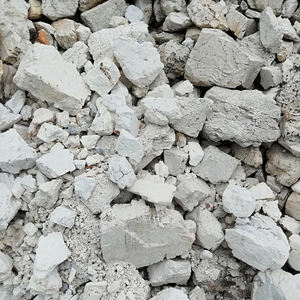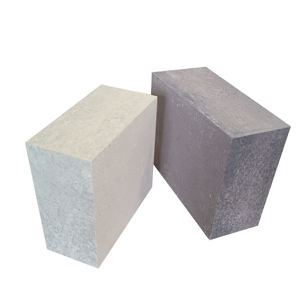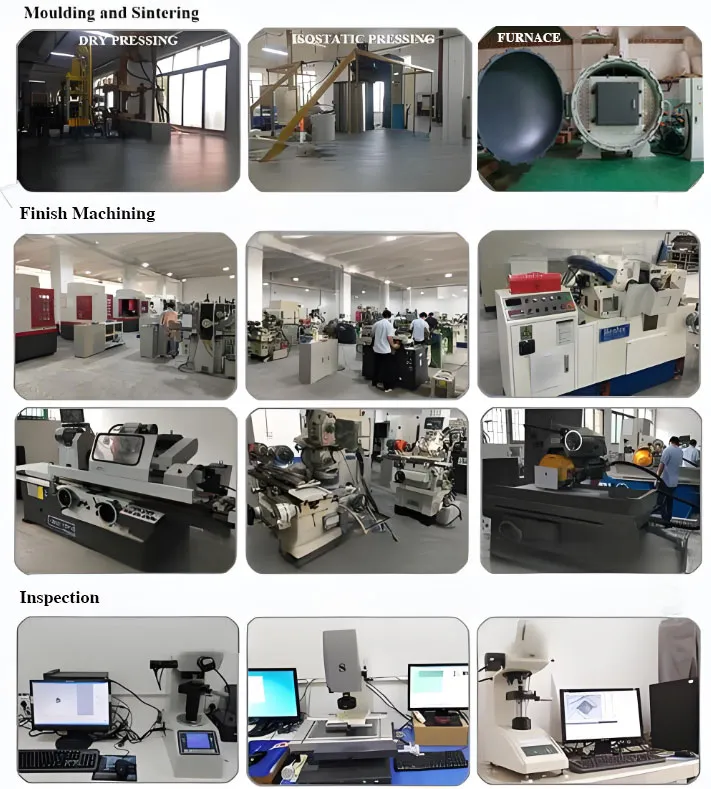Discover Premium Ceramic Products | Durability & Elegance United | Advanced Ceramics
1. Introduction
Imagine trying to bake a soufflé inside a volcano. Sounds impossible? That’s basically what scientists do when they grow high-purity semiconductor crystals—and their trusty baking dish is none other than the silicon carbide crucible. Forget silicon carbide ceramic dinner plates or butter dishes (yes, those exist, and no, you probably shouldn’t serve your Thanksgiving turkey on them). In the world of advanced materials science, the silicon carbide crucible is the heavyweight champion of containment.

While most people associate silicon carbide with ceramic tiles, grinding discs, or even fancy black pasta bowls, its real superpower shines in extreme industrial environments. Specifically, in crystal growth furnaces where temperatures soar past 2,000°C and chemical aggression is the norm. Let’s dive into why this unglamorous black pot is indispensable for making the chips that power your phone, EV, and 5G tower.
2. The Crucible’s Crucial Role in Crystal Growth
2.1. Growing Crystals Without Melting the Kitchen
Producing single-crystal silicon carbide or gallium nitride isn’t like stirring sugar into tea. These materials require controlled sublimation or melt processes at blistering temperatures—often exceeding 2,200°C. At those extremes, most containers would melt, crack, or react with the molten material, contaminating the crystal. Enter the silicon carbide crucible: thermally robust, chemically inert, and mechanically tough.
Unlike your silicon carbide ceramic casserole dish (which, admittedly, looks sleek on a rustic kitchen shelf), industrial crucibles are engineered for purity and performance. They resist thermal shock better than a polar bear in a sauna and maintain structural integrity where even platinum would throw in the towel.

2.2. Why Not Use Silicon Nitride Instead?
You might wonder: what about silicon nitride crucibles? After all, there’s a whole silicon nitride crucible factory churning them out, and silicon nitride ceramic components like rings, plates, and custom heat shields are popular in aerospace. But here’s the catch: while silicon nitride offers excellent thermal shock resistance and strength, it begins to decompose above 1,800°C in inert atmospheres—right when silicon carbide processes are just getting started.
Plus, when comparing boron carbide vs silicon carbide, the latter wins hands-down in oxidation resistance and cost-effectiveness for high-temperature crucibles. Boron carbide is harder, sure, but it’s also more expensive and less stable in oxidizing environments. For crystal growers, silicon carbide is the Goldilocks material: not too reactive, not too fragile—just right.
3. Beyond the Crucible: Supporting Cast in High-Temp Systems
3.1. The Full Silicon Carbide Ecosystem

A silicon carbide crucible doesn’t work alone. It’s part of an elite squad of high-performance components that keep crystal growth furnaces humming. Think silicon carbide ceramic tubes for thermocouple protection, silicon carbide burner nozzles that won’t warp under flame, and even silicon carbide brick linings that insulate the furnace like a space-age igloo.
Then there are the unsung heroes: silicon carbide ceramic columns that support internal fixtures, RBSiC silicon carbide tile blocks that shield sensitive zones, and porous silicon carbide tubes that manage gas flow without degrading. Every piece is designed to endure what would vaporize ordinary ceramics.
3.2. Precision Matters—Even in a Furnace
Contrary to what you might assume, these aren’t just lumpy clay pots. Modern silicon carbide crucibles are precision-machined to exact tolerances. A slight warp or impurity can ruin an entire crystal boule worth tens of thousands of dollars. That’s why manufacturers use high-purity silicon carbide powder and advanced sintering techniques—far removed from the artisanal charm of handcrafted silicon carbide ceramic plates for painting or Christmas platters.
And while you can buy a silicon carbide baking dish Staub-style for your sourdough, don’t expect it to survive a stint in a tube furnace. Industrial-grade and kitchen-grade silicon carbide may share a name, but their purposes are galaxies apart.
4. Real-World Impact: From Crucible to Your Smartphone
The silicon carbide crucible might look like a simple black cylinder, but it’s a linchpin in the semiconductor supply chain. Without it, we couldn’t mass-produce the wide-bandgap semiconductors that enable faster charging, more efficient power grids, and compact radar systems. Companies racing to build next-gen EVs and 6G infrastructure depend on flawless crystal growth—and that starts with a crucible that won’t flinch at 2,200°C.
Even the high purity silicon nitride powder market, while growing for other applications, can’t dethrone silicon carbide in this arena. When the heat is on—literally—engineers reach for silicon carbide, not silicon nitride.
5. Conclusion
So next time you admire your sleek silicon carbide black ceramic plates or ponder the merits of a silicon carbide ceramic salad bowl, remember: the same material is quietly enabling the future of technology in a furnace somewhere, holding molten stardust that will become tomorrow’s microchips. The silicon carbide crucible may not win any design awards, but in the high-stakes world of crystal growth, it’s the ultimate MVP—Modest, Virtuous, and Practically indestructible.
Our Website founded on October 17, 2012, is a high-tech enterprise committed to the research and development, production, processing, sales and technical services of ceramic relative materials such as Why. Our products includes but not limited to Boron Carbide Ceramic Products, Boron Nitride Ceramic Products, Silicon Carbide Ceramic Products, Silicon Nitride Ceramic Products, Zirconium Dioxide Ceramic Products, etc. If you are interested, please feel free to contact us.
